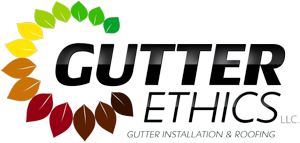When a storm rolls through Oakton, VA, it’s not uncommon for hail and high winds to cause significant damage to roofs. Whether it’s from strong winds that rip off shingles or hail that leaves dents and cracks, roof damage can quickly lead to leaks and further deterioration if not repaired promptly. Navigating the insurance claims process after a storm can be overwhelming, but knowing what steps to take can help you ensure that your roof is repaired quickly and efficiently. At Gutter Ethics, we understand the challenges homeowners face during this process, and we’re here to guide you every step of the way.
Here’s a comprehensive guide on how to handle roof insurance claims after hail or wind damage.
1. Document the Damage Immediately
As soon as it’s safe, begin documenting the damage to your roof caused by the storm. This will be crucial when filing your insurance claim. The more thorough and detailed the documentation, the better chance you have of receiving a fair payout from your insurer.
- Take Clear Photos and Videos: Capture all visible damage from different angles. Focus on areas like missing or damaged shingles, dented gutters, and any visible structural issues caused by hail or wind.
- Document the Date and Time: Make sure to note when the storm occurred and gather any available weather reports that can verify the severity of the storm.
- Check for Interior Damage: Don’t forget to check the interior of your home for signs of water leaks or stains on ceilings and walls. If you find any, document them as well.
- Hire a Professional: If you’re unsure what’s damaged or want to ensure you don’t miss anything, consider hiring a professional roofing contractor like Gutter Ethics to conduct a thorough inspection of your roof and provide a comprehensive damage report.
2. Review Your Insurance Policy
Before you file your claim, it’s essential to review your homeowners insurance policy to understand what’s covered and what’s not.
- Check Coverage for Storm Damage: Most standard homeowners policies cover roof damage caused by hail and wind. However, the extent of your coverage can depend on the specifics of your policy. Be sure to confirm that wind and hail damage are covered in your area.
- Understand Your Deductible: Most policies require homeowners to pay a deductible before the insurance company covers the cost of repairs. Understanding your deductible amount will help you know what to expect when filing your claim.
- Look for Exclusions: Some policies may exclude specific types of damage or offer limited coverage for roofs, especially if they’re older. Make sure to read through your exclusions and know exactly what is and isn’t covered.
3. File the Claim with Your Insurance Company
Once you’ve documented the damage and reviewed your insurance policy, it’s time to file your claim. Be sure to contact your insurance provider as soon as possible, as some policies have time limits for filing claims.
- Provide Detailed Documentation: When submitting your claim, provide the photos, videos, and written documentation you’ve collected. The more evidence you have, the stronger your claim will be.
- Be Prepared for the Adjuster’s Visit: After you file the claim, your insurance company will likely send an adjuster to assess the damage. Be sure to be present during the inspection to answer any questions and point out specific areas of concern that might be easily overlooked.
4. Schedule a Roof Inspection from a Professional Contractor
While the insurance adjuster will assess the damage, it’s also a good idea to hire a professional roofing contractor, like Gutter Ethics, to perform a thorough inspection of your roof. We can help you identify all damage, even damage that may not be immediately visible from the ground. Getting an independent estimate can also help ensure the insurance company provides a fair payout.
- Get a Written Estimate: Request a detailed, written estimate from the roofing contractor for repairs or replacement. This estimate will help you compare the adjuster’s estimate and ensure you’re getting an accurate assessment.
- Identify Hidden Damage: Sometimes, the damage caused by wind and hail may not be obvious until a professional checks the roof up close. A contractor may notice issues like cracked flashing, underlayment damage, or other structural problems.
5. Be Present During the Insurance Adjuster’s Inspection
When the insurance adjuster visits your home, it’s crucial to be there to ensure that they accurately assess all of the damage.
- Point Out Specific Damage: Walk the adjuster through the affected areas of your roof, gutters, and the interior of your home. Don’t hesitate to highlight areas of concern that may not be immediately obvious, such as hidden damage in hard-to-reach areas.
- Ask Questions: If you’re unsure about anything the adjuster says or if you feel they missed something, ask for clarification. Make sure all damage is documented and addressed.
6. Review the Adjuster’s Estimate and Settlement
After the adjuster’s inspection, they will send an estimate to your insurance company, detailing the cost of repairs. This will determine how much your insurer will pay for the damage.
- Compare Estimates: Review the estimate provided by the adjuster and compare it with the written estimate from your roofing contractor. If the insurance settlement is too low, you may need to provide additional documentation to support your claim.
- Understand Depreciation: Many insurance policies apply depreciation to roof repairs, which means they may only cover the current value of your roof, not the replacement cost. If your policy includes recoverable depreciation, you may need to pay for repairs upfront and submit receipts for reimbursement.
- Appeal if Necessary: If you feel the insurance company is offering too little to cover the necessary repairs, you have the right to appeal the decision. Work with your contractor to provide further documentation that demonstrates the full scope of the damage.
7. Complete the Roof Repairs
Once you’ve received your insurance payout, it’s time to complete the repairs. Ensure that the work is done by a professional contractor to guarantee quality repairs.
- Choose a Reputable Roofing Contractor: Work with a trusted contractor like Gutter Ethics who has experience dealing with insurance claims and storm damage. We’ll ensure that the repairs are completed promptly and properly, restoring the integrity of your roof.
- File for Recoverable Depreciation: If your insurance company withheld depreciation, submit receipts for the work done to recover those funds after the repairs are completed.
8. Prevent Future Damage with Regular Roof Maintenance
Once your roof is repaired, it’s a good idea to schedule regular inspections and maintenance to prevent future damage from storms. Gutter Ethics offers roof and gutter maintenance services that can help protect your home from future hail or wind damage, ensuring your roof stays in top condition year-round.
Professional Roofing Contractor Serving Oakton, VA & Nearby Areas
Dealing with roof damage caused by hail or wind can be stressful, but understanding the insurance claims process can help make it smoother. By documenting the damage, working with a professional contractor, and carefully reviewing your insurance policy, you can ensure that your home is repaired quickly and properly. At Gutter Ethics, we are here to assist with roof inspections, damage assessments, and repairs. If you’ve experienced hail or wind damage to your roof, don’t hesitate to contact us for expert help navigating the claims process and restoring your home.
If you’re ready to take the stress out of gutter maintenance, contact us today. Let us show you why we’re the best in the business!

